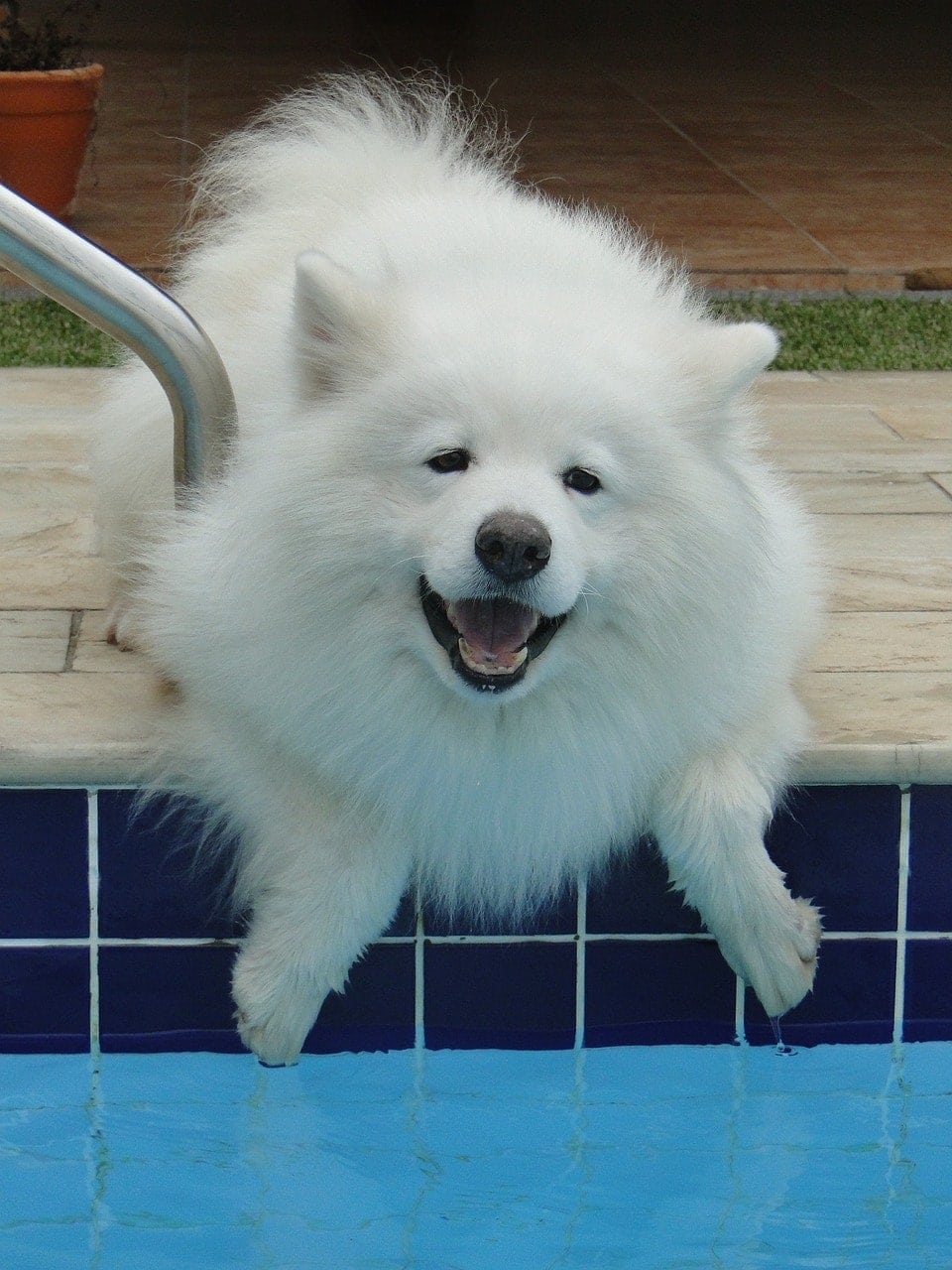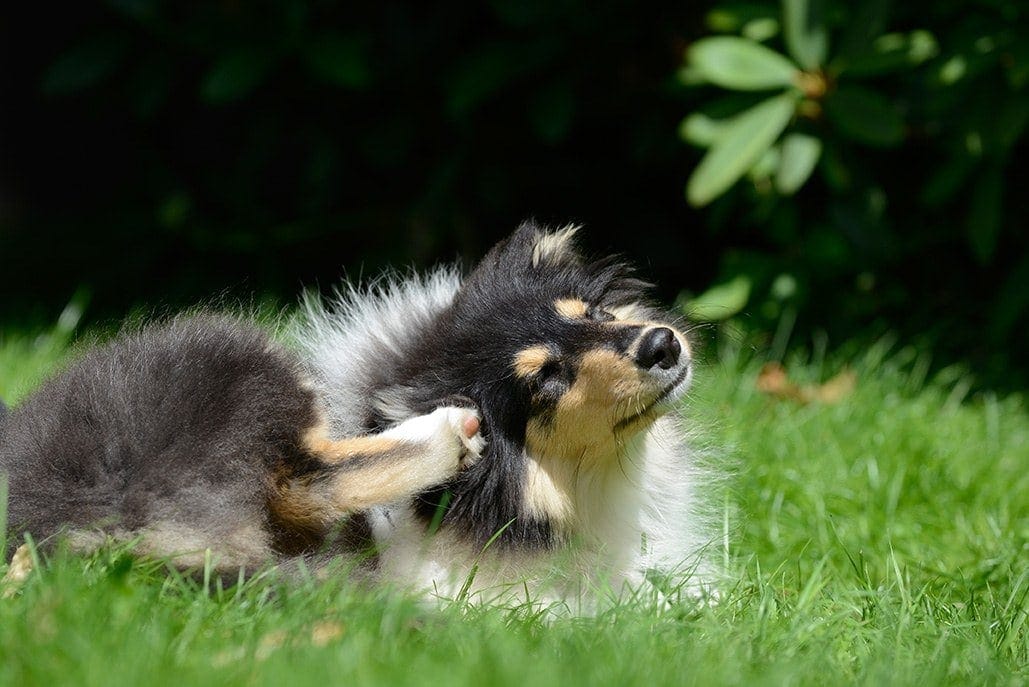Some dogs take one look at water and happily walk in the other direction. Others jump right in without a second thought.
Part of this difference in preference can be based on their breed. For example, dogs with double coats often have a survival instinct telling them not to go into the water because their coats will get so heavy and try to drag them down. However, each dog is different, and no matter what breed your dog is, they might love going for a swim.
If you have a pool, dogs that like to swim might see it as a splashy playpen. However, if they go in unsupervised, it can pose a risk to their health, and they might even drown. Fortunately, there are plenty of ways that you can ensure your pet’s continued safety when they play around the pool.
The 5 Easiest Ways to Keep Your Dog Out of the Pool Are:
1. Put Up a Fence
One of the most common ways to add a layer of protection around your pool area is to literally fence it off. Not only does this keep your dog safe, but it can also keep your children safe. This is a great way to keep dogs out of pools.
A safety fence is only effective if it is tall enough, however. The fence should be at least 4 feet high, depending on your dog’s size and agility level. Some dogs, such as Huskies, are excellent at getting into and out of places they shouldn’t. If you have a breed like this, you might need to install fences closer to 6 or 7 feet high.
Another good rule to follow is to put up a fence that you can see through. You should always have a way to see into the pool area because some dogs will figure out how to get in no matter how high the fence is. You want to be able to monitor the area when they are outside.
If you want to use something more aesthetically pleasing than a chain-link fence, then space the vertical slats of a fence no more than 1 ¾ inches apart. This way, you can glimpse into the area from a window or another vantage point in the yard, but your pup can’t gain purchase and nose their way through it.
When you put the fence up, you will still need a way to make it through to the pool. Any gate that you install in the fence should be self-locking. That means it should swing back into place and automatically and securely lock itself again.

2. Teach Them Pool Commands
If you have a dog that listens to your commands and respects the rules that you set out for them even when you aren’t around, you can always try to train them not to go near the pool. This prevents you from having to put up a fence or constantly keep the pool covered when it isn’t in use.
Note that this method only works if you can trust your dog to learn from the commands and continue to obey them even if you aren’t around.
A) “The Boundary Line” Training
The “Boundary Line” method gives your dog a specific area in which they are and are not allowed to be. You train them based on a line around the pool, how close they are allowed to be, and when they need to move away.

Step 1: Create the Boundary Line
Start by creating the boundary line that you feel comfortable with your dog being around the perimeter of the pool. It is best to push the line far enough away so they can’t jump from the line into the pool in one leap. Keep them a safe distance away.
Make the line something obvious, but don’t rely on colors because dogs don’t see them as well. Make it stick up from the ground slightly or perhaps light up.
Step 2: Position Yourself for the Command
Position yourself on the poolside of the boundary line and your dog on the outside of the line. They need to know that that is your area, not theirs, and they need to respect that line. They are free to move around outside the line but not come inside of it.
Step 3: Use Commands They Know
Tell them to sit and reward them when they stay on that side of the line. If they try to cross the line, vocally reprimand them, preferably using a command that you have used in the past, such as “no” or “ah-ah.”
Step 4: Reinforce Good Behavior
Each time they back away from the line at the sound of your command, reward them. Get them to continue to sit or lie down with you on one side and them on the other. Then, try to move around on the inside of the line and prevent them from following you. Each time they try to cross, use the negative sound, and reward them if they retreat.
Step 5: Practice Around the Perimeter
Take them around the perimeter of the pool’s boundary line. Establish that the line goes around the entire pool, and they aren’t allowed to cross at any point. Then, practice, practice, and practice for weeks until you are sure they understand that they should never cross the line unless you permit them to come inside.

B) “Not Interesting/Leave It” Training
This method is similar to the boundary line method. However, instead of creating a line, it involves more monitoring than the previous method.
Step 1: Walk Your Dog on a Leash
If your dog has already learned the “leave it” command, this process will be more straightforward. Walk your dog on a leash around the pool. Each time they try to go into or nearer the pool, command them to “leave it.”
Step 2: Practice and Reinforce Good Behavior
Continue to practice walking around the pool on a leash, reinforcing good behavior with treats and praise every time they leave the pool’s edge.
Step 3: Try It Off-Leash
After a couple of days or weeks of consistent practice and good behavior, try to do it off the leash. Try having them walk with you around the pool’s edge when they are not restrained.
Step 4: Teach Them to Enter by Invitation
Swimming can be a great exercise for a dog. If you want your dog to use the pool when you are around to monitor them, teach them that it is okay to enter by invitation. Get into the pool and tell them to come. Swim for a while with them, and then get out of the pool. Once they exit and you aren’t in the pool, tell them to “leave it” if they try to go back in. Repeat this until they understand that they can only come in when they get invited.

3. Cover the Pool
Covering the pool is a straightforward method to keep your dog out of the pool area. You don’t have to worry about them jumping a fence or deciding not to listen to your commands.
It is best to use the special safety cover made for your pool in particular. If you cover it up using something different, it might not fit as securely, and your dog could slip underneath it. That is why you should never using a floating pool cover if your dog has access to the pool. Even a good swimmer can get trapped below the cover and not figure out how to escape in time.
Remember that your dog will likely feel curious about the pool cover and try to step on it. The safety cover should be made of strong material like polyester. It needs to be a product that won’t break even if your dog walks on it.
Each time you reuse the cover, check it for any holes. You don’t want them to fall through if they walk over it.

4. Install an Alarm at the Gate to the Pool
If you do have a fence and a gate around the pool already, an extra safeguard you can use is an alarm that is activated when the gate is opened. This way, if your pup does try to open the gate, then the alarm will alert you that they have slipped inside. You won’t have to constantly watch or worry when they are outside to know if they have gone into the pool area.
- You might also like: Dog Pool Safety: 7 Tips for Protecting Your Furry Friend
5. Monitor Their Time Outside
Finally, the only 100% surefire way to ensure that your pup has stayed away from the pool is to monitor the time that they spend in the yard. It is best to give them walks, runs, or hikes or play games with them to encourage actual exercise. Letting them wander around in the yard doesn’t serve as much purpose and only puts them in possible danger.
Featured Image Credit: Pixabay







